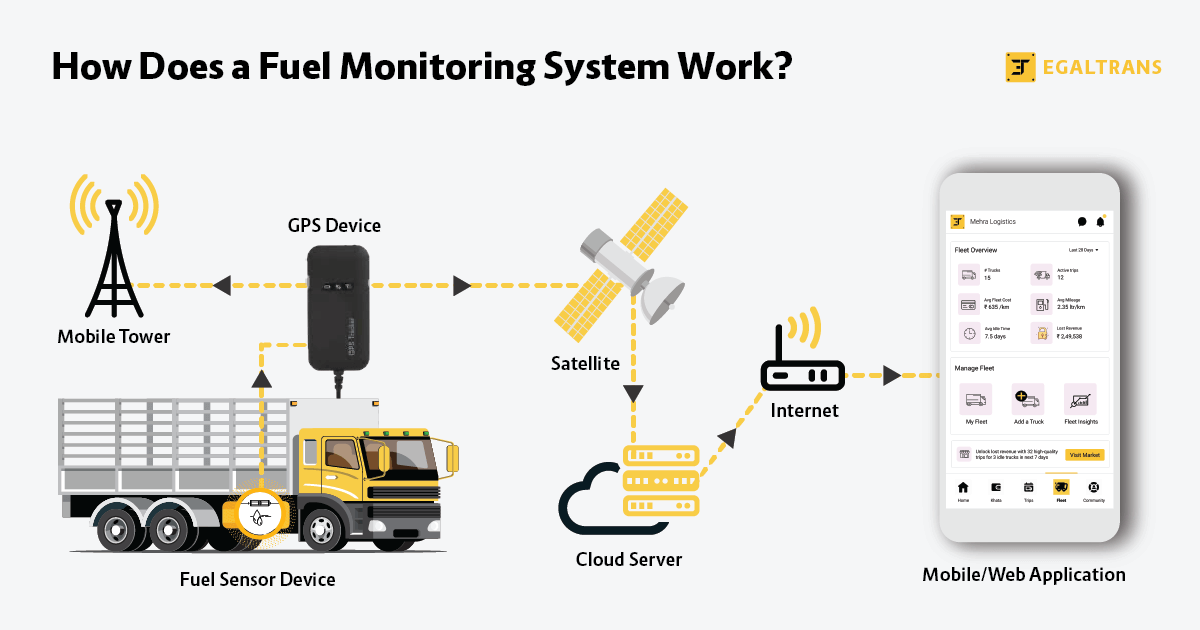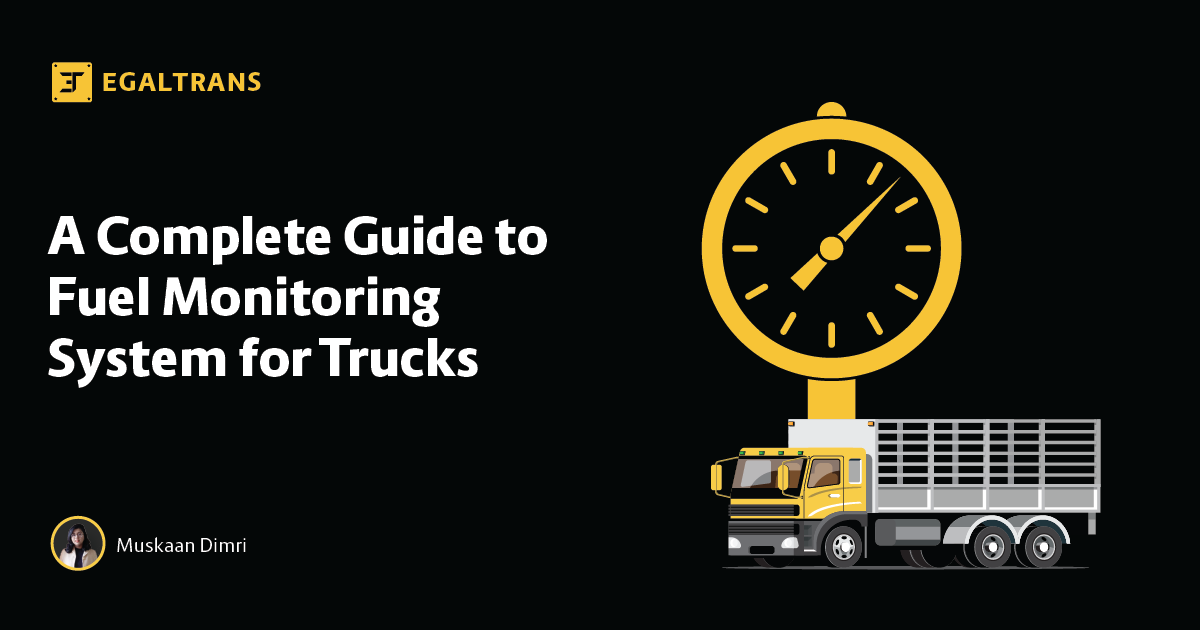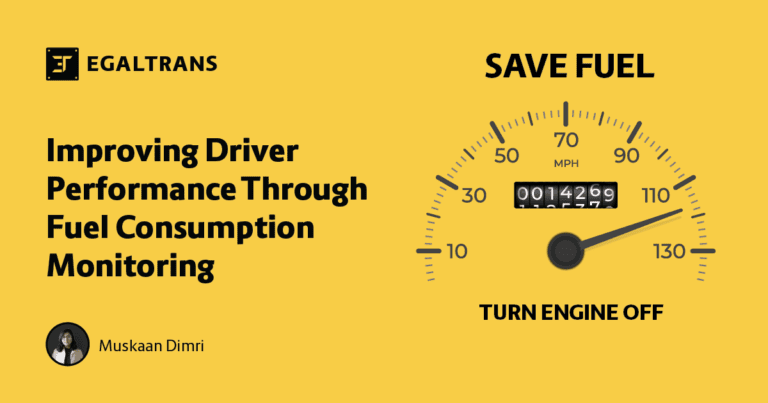Among all the vehicle-based costs for a fleet, fuel constitutes a majority part of it. A heavy commercial truck can easily consume more than Rs 300,000 per annum, diesel fuel accounts for more than 50% of its total running costs. Rising fuel costs are causing a dramatic impact on overall costs for big truck fleets. Therefore, it is an essential task for truck owners to reduce their fuel consumption. As the saying goes, you can’t control what you can’t measure. It becomes a mandate for fleet owners to keep a tab of their fleet’s fuel consumption with fuel monitoring system for trucks.
One of the reasons for rising fuel prices is the imbalance between oil production and demand, and as fleet manager you need to keep on top of this imbalance. If you are new to the transportation business and have questions like “what is fuel monitoring” or “how to reduce fuel costs” then this article is a must for you.
What is a Fuel Level Monitoring System and How it Works
The Fuel Monitoring System is a technology developed to track real-time fuel levels, consumption and refills to optimize fuel efficiency and prevent frauds and cheating. Fuel tracking is essential for truck fleet management systems in the logistics industry, as this solution can be part of a vehicle fuel tracking system, improving the cost per trip per truck. Large fleets now require fuel tracking for a number of reasons, including:
- Preventing fuel wastage
- Tracking fuel expenditure
- Improve the efficiency of fuel tanks
- Maintain accurate records
- Influencing good driver loyalty

The fuel management system uses GPS technology and IT automatically generates different types of comparison charts based on the distance traveled by the vehicle from point A to point B. These charts provide business owners with operational insights to help identify various technical and usage pitfalls. The fuel management system provides accurate information on fuel consumption. Increased fuel consumption could be seen due to insufficient tire pressure, malfunction of the heater burner, etc. Best of all, you’ll also get important information about fuel dumping, fuel theft by roadside thieves, and excessive fuel consumption.
What is the Need of Fuel Management and Monitoring?
Fuel is the most essential logistics and transportation commodity, accounting for about 30-50% of costs depending on the industry. Rising fuel costs have hit businesses for years and have become a significant problem.
Therefore, the need of an enterprise’s time is to manage fuel efficiency in order to reduce operating costs. This can be achieved through efficient fuel management systems and better fleet management. The older your vehicle gets and the more time you spend on the road, the more it wears out. Fuel management systems have various tools such as for route optimization that saves general maintenance and repair costs by minimizing vehicle use.
Fuel management systems help companies reduce their CO2 emissions by generating reports comparing vehicle performance. We highlight the units that need the most work to be environmentally friendly.
Also Read: Fuel Monitoring System – Need Of The Hour for Fleet Owners
Different Types of Fuel Level Monitoring Sensors
A fuel sensor is a device used to accurately measure the fuel level in a vehicle’s tank.The fuel monitoring system constitutes different types of fuel sensors, depending upon the type of truck, some of which are :
- Floating Fuel Sensor: The floating fuel sensor is a factory installed sensor. Used to display relative fuel levels on the vehicle’s dashboard. One disadvantage of these sensors is that they only indicate the approximate level of fuel in the tank and are not very accurate. The relative error is approximately 20%.
- Capacitive Fuel Sensor: These sensors are used as accuracy instruments in fleet management systems. Such sensors are additionally installed by integrators of GPS tracking and telematics systems. The sensors are made with relative error less than 1-2%.
- Pressure Sensor: The most used type of pressure sensor for fuel level measurement is the hydrostatic type sensor. A hydrostatic pressure sensor detects the head pressure of a liquid. They have a precision rate of about ~95%.
- Ultrasonic Fuel Sensor: Ultrasonic level sensors use the principle of ultrasonic waves to measure the liquid level. They are used for continuous non-contact level measurement. An ultrasonic pulse is emitted by a sensor (transducer), the sound wave is reflected by the liquid surface and received by the same sensor or ultrasonic receiver. They have very high precision rate.
- Fuel Flow Meter: It measures the volumetric fuel consumption. Connects to the fuel line between tank and engine. Flowmeters used for fuel consumption measurement which are mainly differential flowmeters. It has two metering chambers, one for the fuel supply line and one for the fuel return line. Measures volumetric fuel consumption by calculating the difference between forward and reverse consumption.

Also Read: The Process of Choosing the Right Fuel Monitoring System
Benefits of Fuel Monitoring System for Trucks
- Improved Data Accuracy: Human error in data collection is common, so switching to an automated system gives you confidence that your data is accurate and up-to-date. The fuel management system updates data in real time so you can respond to problems sooner, improve vehicle performance and keep your fleet running longer.
- Optimization and Efficiency in fuel cost: Using a fuel management system can improve fuel efficiency and prevent wasted fuel. Tracking vehicle maintenance and driver routes can use this data to make cost-effective decisions. Fuel efficiency can be implemented by more efficient driving routes and promoting better driver behavior. It helps in fuel consumption optimisations hence saving cost for the overall fleet and therefore eliminating chances of any surprise breakdowns.
- Fuel theft elimination: Fuel theft is a major problem in the industry. A thief can use a technique called fuel skimming, which replaces the fuel pump’s card reader with a skimmer that collects cardholder data and reports fraud. However, the fuel management system can track the exact amount of fuel being used and when it was accessed. You can use this data to identify fleet safety issues and implement solutions.
- Adopt good driving habits: Collecting information about unnecessary speeding, hard braking, and excessive engine idling can provide incentives to support efficient drivers and educate those with inefficient driving habits.
A fuel monitoring system is the best investment to make sure all your assets are performing at their best, helping you reduce your fuel bills , generate more profit and streamline the business more properly and efficiently and allow a quicker response. With advancements in the management systems fleet owners are implementing vehicle tracking systems in their vehicles in a large number nowadays in order to have full control over vehicles while on road.






